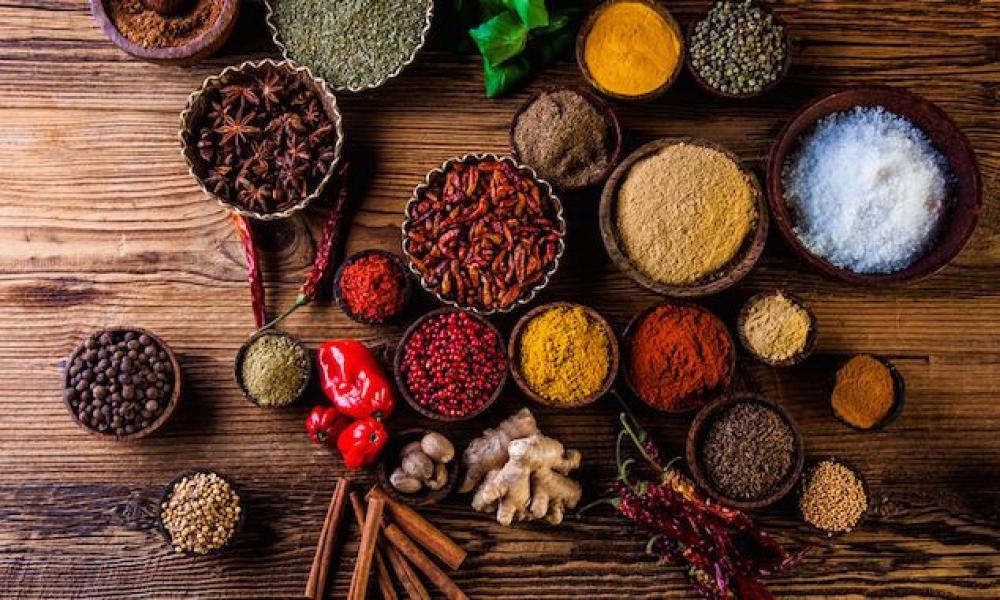When we taste a beverage or food product, we may wonder: Is the flavor we are enjoying natural or artificial? Flavors are an essential part of the food and drink experience, but the difference between natural and artificial flavors goes beyond just taste. It relates to where these flavors come from, how they are produced, and their impact on health and the environment. In this article, we will shed light on the difference between natural and artificial flavors, and how to choose the one that best suits your lifestyle and health needs.
What are natural flavors?
Natural flavors are compounds extracted directly from natural sources such as plants, fruits, herbs, spices, or even animal products. These flavors are extracted using simple physical or chemical methods, such as pressing, distillation, or fermentation, without any major chemical modification that affects their basic properties.
Characteristics of natural flavours:
- Natural source:
- It comes from 100% natural ingredients, such as vanilla extracted from vanilla pods, or orange oil extracted from orange peels.
- High quality:
- It has a purer, more natural taste, making it a favorite choice for lovers of authentic flavors.
- Uses:
- It is used in a variety of industries, such as food, beverage, and cosmetics, to add a natural, refreshing flavor.
- Health benefits:
- They are often less harmful to health than artificial flavours, as they are free of manufactured chemicals or artificial additives.
Examples of natural flavors:
- Natural vanilla extract.
- Peppermint oil.
- Concentrated lemon juice used as a flavouring.
- Essential oils extracted from herbs and fruits.
Although natural flavors are considered a healthier and safer option, they may be less stable than artificial flavors, and their production may require large quantities of natural raw materials.
How are artificial flavors made?
Artificial flavors are chemical compounds that are created in laboratories to mimic a particular taste or smell. These flavors are widely used in the food and beverage industry to enhance taste, and are often a less expensive and more stable alternative to natural flavors.
Steps for making artificial flavors:
- Natural Flavor Analysis:
- The process begins with analyzing the natural flavor using advanced techniques such as spectroscopy or chromatography to understand the chemical composition of the natural source.
- Choosing the right chemicals:
- Synthetic chemicals are chosen to match the molecules found in natural flavours.
- Materials approved by regulatory bodies are used to ensure their safety for human consumption.
- Mixing Chemical Compounds:
- The chemicals are mixed in very precise proportions to achieve a flavour that matches the desired taste and aroma.
- In some cases, stabilizers or flavor enhancers are added to make the taste last longer.
- Quality and taste test:
- Sensory and chemical tests are conducted to ensure that the artificial flavour accurately mimics the natural flavour.
- Commercial production:
- After the flavour is approved, it is mass produced for distribution to food and beverage manufacturers.
Properties of artificial flavors:
- Greater variety: Flavors that do not exist in nature can be created.
- Lower cost: Requires less raw materials compared to natural flavors.
- Higher stability: It has the ability to maintain flavour for longer periods and under various storage conditions.
Examples of common chemical compounds:
- Vanillin: A chemical compound that mimics the taste of vanilla.
- Ethyl Butyrate: Gives a fruity flavour like pineapple.
- Methyl anthranilate: used for grape flavouring.
Although artificial flavors are considered safe when used within recommended limits, some people prefer natural flavors because they are closer to the original and have less impact on health and the environment.
Are artificial flavors unhealthy?
Artificial flavors are not necessarily unhealthy, but they may be less appealing to some people than natural flavors. Artificial flavors are safe to consume if used according to the standards and controls set by health authorities such as the Food and Drug Administration (FDA) or similar regulatory bodies. However, there are aspects that should be taken into account when evaluating their impact on health:
Positive aspects of artificial flavors:
- Certified Safety:
- Most artificial flavors are extensively tested to ensure they are safe for human consumption.
- They are manufactured under strict standards to reduce any harmful substances.
- Free from allergens:
- In some cases, artificial flavors are less likely to cause allergic reactions than natural flavors extracted from sources that may contain allergens.
- Better stability and stability:
- It has the ability to maintain its quality for long periods, which reduces the possibility of spoilage.
Aspects to pay attention to:
- Chemical composition:
- Some artificial flavors contain compounds that may not be suitable for consumption in large quantities or over the long term.
- Side effects:
- Some people may have allergic reactions or intolerances to certain chemicals in artificial flavors.
- Food quality:
- Artificial flavors only add taste and do not provide nutritional benefits such as vitamins or antioxidants found in natural flavors.
- Chemical allergy:
- Some people prefer to avoid products with artificial flavors for personal or health reasons, such as wanting to reduce exposure to manufactured substances.
What is natural identical flavor?
Natural identical flavors are chemical compounds that are created in a laboratory to be identical to the molecules responsible for taste and aroma found in natural sources. Although they are manufactured synthetically, their chemical structure closely mimics the natural source, making them a popular choice in the food and beverage industry.
Identical natural flavour characteristics:
- Source:
- They are made from synthetic chemicals, but they are identical to the composition found in natural flavors.
- Cost:
- Less expensive than natural flavours, as they do not require large quantities of natural raw materials.
- Stability and quality:
- They are more stable than natural flavours, as they are not easily affected by storage conditions or climate changes.
- Common usage:
- It is used in products that require natural flavor with an economical appearance, such as juices, desserts, and baked goods.
Examples of natural identical flavours:
- Vanillin: Used as an economical substitute for natural vanilla.
- Limonene: A chemical compound that mimics the flavor of an orange or lemon.
- Ethyl butyrate: Fruity flavour like pineapple.
Is natural identical flavor safe?
- Yes, natural identical flavours are safe for consumption if they are produced in accordance with international health standards and specifications.
- But it may be less attractive to consumers who prefer products derived entirely from natural sources.
The difference between natural flavor and natural identical flavor:
- Natural flavour: extracted directly from natural sources (such as plants or fruits).
- Natural Identical Flavor: Made in a lab but chemically identical to natural flavor.
Naturally identical flavor is a practical option that combines natural taste with economical cost, making it popular in many food products. However, consumers looking for completely natural ingredients may prefer natural flavors extracted from the original sources.
What is the difference between natural and artificial flavors?
Natural and artificial flavors are used to enhance the taste and aroma of foods and beverages, but the difference between them lies in the source, method of production, and nutritional quality. The choice between natural and artificial flavors also depends on personal preference, cost, and health priorities. If you are looking for authentic taste and nutritional benefits, natural flavors are the best choice, while artificial flavors are a practical and economical option for the food industry. Here are the main differences between natural and artificial flavors:
1. Source:
- Natural Flavors:
- Extracted directly from natural sources, such as plants, fruits, herbs, and spices. For example, natural vanilla is extracted from vanilla pods.
- Artificial flavors:
- Made in a laboratory using chemical compounds that mimic the natural flavor. Example: Synthetic vanillin, which mimics the flavor of vanilla but is chemically manufactured.
2. Production method:
- Natural Flavors:
- They are extracted by simple physical or chemical methods, such as distillation or pressing, without major chemical modification.
- Artificial flavors:
- They are produced using chemical reactions in the laboratory, making them capable of being manufactured in large quantities and at a lower cost.
3. Nutritional quality:
- Natural Flavors:
- They often contain additional nutritional ingredients such as vitamins or antioxidants.
- Artificial flavors:
- It only adds flavor with no nutritional benefits.
4. Cost:
- Natural Flavors:
- More expensive due to limited resources and difficulty of extraction.
- Artificial flavors:
- Less expensive, making it an economical choice for the food industry.
5. Stability and storage:
- Natural Flavors:
- Less stable and may lose quality with prolonged storage.
- Artificial flavors:
- More stable and lasts longer under a variety of storage conditions.
6. Impact on health:
- Natural Flavors:
- It is considered safer and more natural, and is preferred by people interested in clean eating.
- Artificial flavors:
- Safe when used within permitted limits, but some people prefer to avoid it due to allergies or concerns about exposure to manufactured chemicals.
Get now the best natural flavors from the luxury of coffee
If you are looking for a rich and authentic experience that brings out the beauty of the taste of your drinks, the luxury of coffee offers you a distinctive range of natural flavors carefully extracted from the best sources. Whether you are a fan of natural fruits, refreshing herbs, or luxurious flavor supplements, you will find everything you need to prepare perfect and healthy drinks that add a touch of distinction to your day. Discover our collection now and start elevating your drinks to a new level of purity and natural taste.

